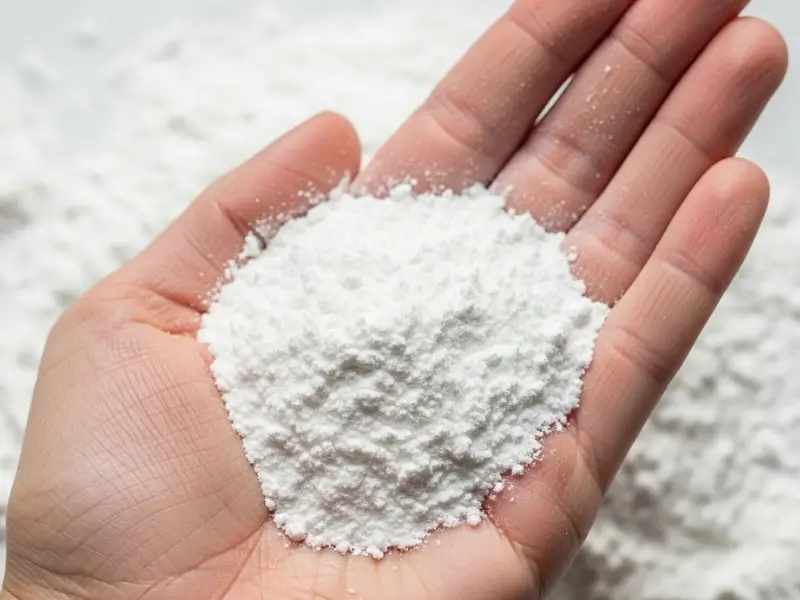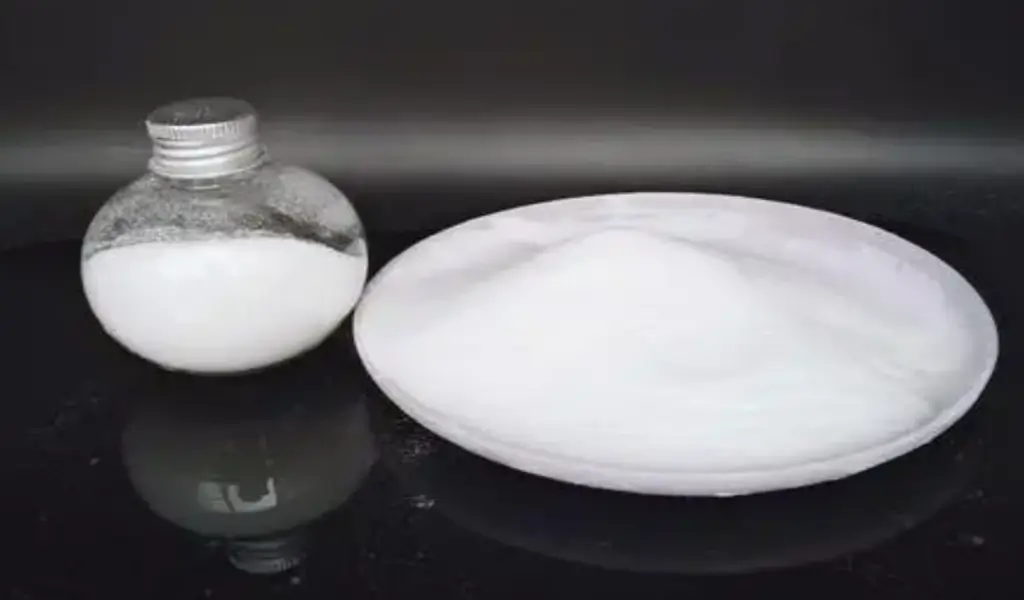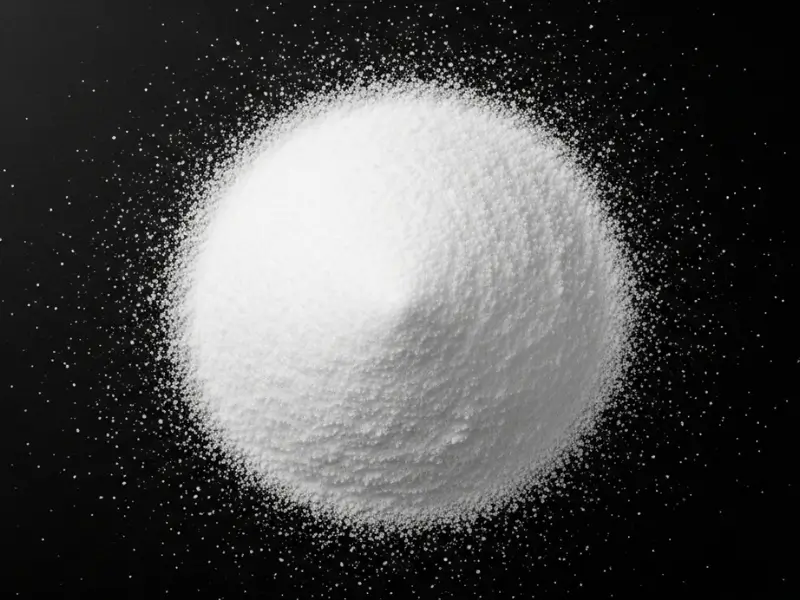How CSM Polymer Applications Span Roofing to Cables is a comprehensive look into the multifaceted uses of Chlorosulfonated Polyethylene (CSM). The relevance of CSM in various industries cannot be overstated, as this versatile polymer finds utility across an array of applications. From durable roofing solutions to electrical cable insulation, understanding the scope and benefits of CSM is essential for professionals in manufacturing, construction, and beyond. This article aims to explore the characteristics of CSM, its specific applications, and the advantages it offers in diverse sectors.
1. Introduction to CSM Polymers
CSM, or Chlorosulfonated Polyethylene, is a synthetic polymer that has garnered attention in a myriad of applications due to its exceptional properties. Ready for the good part? Understanding CSM’s widespread significance begins with recognizing its unique qualities. CSM’s ability to withstand harsh environmental conditions, including UV exposure and temperature variations, makes it ideal for outdoor applications such as roofing and caulking. Its inherent chemical resistance adds to its desirability in sectors that require durable materials.For a deeper dive into CSM’s chemical resistance in comparison with other elastomers, see”CSM Chemical Resistance: The Clear Advantage Over Other Elastomers.”
In manufacturing, CSM also shines in applications requiring electrical insulation, particularly in cable production. Its flexibility and strength contribute to creating reliable and safe electrical components. Given its broad range of applications, the importance of CSM in modern technology and infrastructure is profound. As professionals increasingly seek materials that combine durability with consistency, CSM emerges as a key solution aligned with current industry needs.
The versatility of CSM is further underscored in various sectors, from automotive to healthcare. By exploring its applications, industries can better assess how CSM can enhance their operations and product offerings.
| Property | CSM Polymer | Importance |
|---|---|---|
| Chemical Resistance | High | Prevents degradation in harsh environments |
| UV Stability | Excellent | Extends the lifespan of outdoor materials |
| Temperature Flexibility | Wide range | Adaptable for diverse applications |
2. Characteristics of CSM Polymers
Understanding the characteristics of CSM is crucial to appreciating its advantages in various applications. But here’s the kicker: CSM possesses a unique combination of properties that set it apart from other polymers. One of its standout features is its chemical resilience. CSM exhibits remarkable resistance to oils, fuels, and many solvents, making it particularly beneficial in industrial environments where exposure to these substances is common.
Another critical characteristic is temperature resistance. CSM maintains its flexibility and integrity across a broad temperature range, allowing it to perform well in both freezing and high-temperature conditions. This flexibility is vital in applications that undergo significant temperature fluctuations, such as roofing or outdoor seals.
Moreover, CSM’s adaptability extends to its processing capabilities. It can be readily molded and extruded to fit various form factors, which facilitates its use in multiple applications. These factors together make CSM a highly versatile material, suitable for everything from automotive parts to construction materials.
Additionally, CSM’s weatherability ensures long-lasting performance when exposed to environmental elements. This durability translates to fewer replacements and repairs, providing economic benefits for businesses using CSM in their products.
| Characteristic | Description | Benefits |
|---|---|---|
| Chemical Resistance | Excellent resistance to oils and fuels | Ideal for industrial applications |
| Temperature Flexibility | Performs well in extreme conditions | Suitable for a variety of environments |
| Molding Capability | Easily processed for different applications | Versatile usage across sectors |
3. CSM in Roofing Applications
CSM’s role in roofing applications showcases its versatility and effectiveness. What’s the real story? Roofing systems made from CSM polymers demonstrate outstanding performance under various environmental conditions. The material’s excellent UV resistance contributes to its durability, allowing roofs to withstand prolonged sun exposure without degradation. This feature is especially vital in regions with harsh climates, where roofing materials are subject to intense sunlight.If you’re curious why CSM performs better under UV exposure, check out ”Why CSM’s UV & Weather Resistance Make It Ideal for Outdoor Use.”
CSM roofing membranes are known for their flexibility, which allows them to adapt to the underlying structure’s movements without compromising their integrity. This adaptability is crucial during temperature fluctuations, as it keeps the roofs sealed and reduces the likelihood of leaks.
Several case studies highlight successful CSM roofing projects. For instance, a commercial building in a sunny region opted for CSM roofing membranes and experienced a significant reduction in maintenance costs over time. The durability of CSM helped the building maintain its aesthetic quality while eliminating the frequent repairs associated with traditional roofing materials.
Moreover, CSM roofing not only ensures reliability but also comes with environmental benefits. Its durability means fewer resources are needed for replacements, leading to a lower carbon footprint over time.
| Roofing Feature | CSM Performance | Advantages |
|---|---|---|
| UV Resistance | Excellent performance | Reduces maintenance frequency |
| Flexibility | Adapts to structural movements | Prevents leaks and damage |
| Longevity | Long-lasting materials | Economical in the long term |
4. CSM in Cable Manufacturing
The use of CSM in cable manufacturing is another compelling application worth exploring. This is where it gets interesting… The electrical insulation properties of CSM make it an ideal choice for a variety of cable types. It provides exceptional electrical insulation, ensuring safety and reliability in electrical networks and devices.
Additionally, CSM’s chemical resistance is particularly crucial in cable manufacturing, where exposure to oils and chemicals can pose risks to insulated cables. By utilizing CSM, manufacturers can create cables that maintain their performance and safety over time, even in challenging environments.
Innovations in cable technology also leverage CSM’s strength. New developments have integrated CSM with additives that improve its properties further, such as enhanced flame resistance or lower smoke emission. This ensures that cables not only meet safety standards but also perform optimally under adverse conditions.
A major telecommunications company that switched to CSM-based insulation in its cables reported fewer failures and improved customer satisfaction due to enhanced reliability. Such case studies underscore the benefits of switching to CSM in cable applications, making it an increasingly popular choice among manufacturers.
| Feature | CSM Benefits | Application Areas |
|---|---|---|
| Electrical Insulation | Ensures safety and reliability | Telecommunications and energy sectors |
| Chemical Resistance | Protects against damage | Industrial and outdoor applications |
| Enhanced Performance | Improves longevity and reliability | Power transmission and distribution cables |
5. CSM in Construction Materials
CSM is not just limited to roofing or cables; it also boasts significant applications in construction materials. But wait, it gets even better… The construction industry has turned to CSM for materials such as sealants and adhesives due to its exceptional adhesion properties and durability.
CSM sealants are used extensively in joints, windows, and doors. Its ability to withstand temperature fluctuations and harsh weather conditions makes it an excellent choice for maintaining the integrity of structures. For instance, buildings constructed in regions prone to heavy rain and snow benefit greatly from CSM-based sealants that ensure watertightness, ultimately protecting the building’s structure.
Furthermore, integrating CSM into other construction materials enhances the longevity and performance of those products. For example, CSM-modified concrete and mortar can withstand harsher environmental stresses, which results in lower long-term maintenance costs.
A successful example includes a high-rise building that utilized CSM for window sealing. Not only did they report a significant decrease in leaks, but the structure also observed better thermal performance. The overall savings in maintenance and heating costs highlighted CSM’s cost-effectiveness in construction applications.
| Application | CSM Use | Benefits |
|---|---|---|
| Sealants and Adhesives | Provides durable and waterproof seals | Increases longevity and reduces leaks |
| Modified Concrete | Enhances strength and durability | Minimizes maintenance costs |
| Window Sealing | Improves thermal performance | Enhances energy efficiency |
6. CSM in Automotive Applications
The automotive industry has increasingly embraced CSM for various components, highlighting its adaptability and functionality. Ready for the good part? CSM’s resistance to fuels and oils makes it particularly valuable in automotive applications, where exposure is inevitable.
In vehicles, CSM is used for components such as gaskets, seals, and hoses, where maintaining a tight seal is crucial for safety and efficiency. These components need to endure fluctuations in temperature and pressure, which CSM handles with ease due to its inherent flexibility and resilience.
One example is a leading automobile manufacturer that integrated CSM gaskets into their engine designs. They found that these gaskets not only improved sealing efficiency but also reduced the likelihood of leaks that can lead to engine damage or decreased performance.
Moreover, the lightweight nature of CSM also offers a weight-saving advantage in vehicle design. Lighter vehicles are more fuel-efficient, further promoting the benefits of CSM in automotive applications as manufacturers strive to meet stricter environmental regulations.
This illustrates that CSM is not just a material; it is a solution provider that enhances vehicle performance while enabling compliance with evolving industry standards.
| Automotive Component | CSM Advantages | Applications |
|---|---|---|
| Gaskets and Seals | Excellent resistance to fuels | Engine parts and transmission systems |
| Hoses | Flexible and durable | Cooling and fuel systems |
| Lightweight Design | Contributes to overall vehicle efficiency | Enhances fuel savings |
7. CSM in the Medical Field
CSM’s applications extend into the medical field, where its safety and durability are paramount. What’s the real story? The properties of CSM align perfectly with the stringent requirements of medical applications, including the manufacturing of devices and equipment used in healthcare settings.
For instance, CSM is used in the production of medical tubing, which requires exceptional flexibility and chemical resistance, ensuring that these devices function optimally in environments exposed to various sterilization methods and fluids. The application of CSM in this context guarantees that the materials withstand the rigorous cleaning and disinfection protocols required in medical settings.
Furthermore, CSM conforms to regulatory standards set forth by agencies such as the FDA, making it a compliant material for direct or indirect contact with patients. This reliability encourages healthcare providers to integrate CSM-based products into their practices.
Case studies reveal that hospitals that incorporated CSM tubing into their systems reported fewer instances of tube degradation and associated complications, illustrating the effectiveness and necessity of using high-quality materials in healthcare.
| Medical Application | CSM Benefits | Importance |
|---|---|---|
| Medical Tubing | Flexible with chemical resistance | Ensures optimal performance in care settings |
| Device Seals | Durable and safe for patient contact | Meets FDA regulatory standards |
| Wearable Medical Devices | Provides comfort and reliability | Enhances patient comfort and safety |
8. Environmental Impact of CSM
The environmental implications of using CSM are of increasing concern in today’s eco-conscious market. This is where it gets interesting… While CSM is a synthetic polymer, its lifecycle can have a lower environmental impact compared to other materials due to its durability and longevity.
CSM products often last significantly longer than their counterparts, which reduces the frequency of replacements and the associated waste. Additionally, CSM can be recycled, allowing manufacturers to reclaim material and minimize the need for virgin resources. This potential for recycling further promotes sustainability within industries that utilize CSM in their products.
Moreover, many manufacturers are now engaging in practices to ensure CSM products are produced more sustainably, reducing energy and resource consumption during production. Companies focusing on eco-friendly practices are discovering not only that they can meet regulatory requirements but also that they can resonate better with a growing base of environmentally aware consumers.
Several organizations have begun to develop initiatives that emphasize the environmental benefits of using high-quality materials like CSM. These efforts are pivotal in promoting CSM as a sustainable choice across various industries, impacting perception and increasing its usage.
| Environmental Aspect | CSM Impact | Benefits |
|---|---|---|
| Lifecycle Durability | Reduces replacements and waste | Less environmental burden |
| Recycling Potential | Can be reused and reprocessed | Supports sustainability efforts |
| Production Practices | Opportunities for eco-friendly methodologies | Aligns with evolving industry standards |
9. Innovations in CSM Technology
CSM technology is continuously evolving, driven by ongoing research and industrial demands. But here’s the kicker: recent innovations have significantly expanded the capabilities of CSM, making it even more relevant in modern applications.
New formulations of CSM include various additives that enhance its properties further. These enhancements can improve its thermal stability or increase its resistance to specific chemicals, allowing for broader application scopes. For instance, advancements in flame-retardant CSM have made it suitable for use in environments that require stringent safety measures, such as aerospace and public transport.
The integration of advanced manufacturing techniques, such as 3D printing, has also begun to enter the realm of CSM applications. This groundbreaking approach allows for quick prototyping and the creation of custom parts using CSM, facilitating innovation across numerous sectors.
A noteworthy example lies in the automotive sector, where companies are utilizing newly developed CSM compositions to create lightweight, fuel-efficient components, optimizing performance without sacrificing safety. These innovations keep CSM at the forefront of material science, embodying the future of manufacturing as it adapts to emerging markets and technological advancements.
| Innovation | Description | Applications |
|---|---|---|
| Flame-Retardant CSM | Improved safety for high-risk environments | Aerospace and transportation |
| Additive Integrated CSM | Enhanced chemical resistance | Industrial and electrical applications |
| 3D Printing with CSM | Custom part prototyping | Rapid manufacturing and design |
10. Challenges in CSM Production and Use
Despite its impressive qualities, CSM is not without challenges. This is where it gets interesting… The production and utilization of CSM come with specific hurdles that industries must navigate to optimize its benefits.
One significant challenge is the initial cost associated with CSM. While it provides long-term savings, the upfront investment can be higher than that of alternative materials. For smaller companies, this can deter them from switching to CSM and limit its broader adoption.
Moreover, the processing of CSM may require specialized equipment and techniques, which can add complexity to production. Manufacturers may need to invest in training or upgrade existing machinery to accommodate CSM’s processing needs.
Lastly, while CSM is suitable for many applications, it is not universally applicable. Some environments, particularly those with extreme temperatures or chemical exposures that exceed CSM’s limits, require alternative materials. Therefore, extensive research and testing are often necessary to confirm that CSM is the best choice for specific applications.
Understanding these challenges is essential for companies considering CSM, enabling them to weigh its advantages against potential barriers to adoption.
| Challenge | Description | Solution |
|---|---|---|
| High Initial Cost | Greater upfront investment compared to alternatives | Long-term economic analysis needed |
| Processing Complexity | Requires specialized production techniques | Investment in training and equipment |
| Application Limitations | Not suitable for all environmental extremes | Comprehensive testing and research required |
11. Cost Considerations
When evaluating the adoption of CSM, understanding its cost implications is vital. But wait, it gets even better… Initial costs for CSM products can indeed be higher than other materials, but the long-term financial benefits can eclipse those upfront expenses.
For instance, CSM leads to reduced maintenance costs due to its durability and longevity in various applications, whether in construction, automotive, or medical sectors. Companies that invest in CSM often find that they need to replace components or materials less frequently, leading to overall savings. In roofing applications, for example, the reduced frequency of repairs translates to fewer labor costs and materials being consumed over time.
In the automotive industry, manufacturers see an increase in vehicle performance thanks to CSM components, leading to happier customers and reduced warranty claims related to failures. Not only does this boost manufacturer profit margins, but it creates brand loyalty among consumers who value reliability.
Additionally, as industries face stricter environmental regulations, switching to durable and recyclable materials like CSM can lead to cost savings in compliance and waste management.
Understanding both the upfront costs and long-term savings can help businesses make informed decisions about incorporating CSM.
| Cost Consideration | Initial Investment | Long-term Savings |
|---|---|---|
| Upfront Cost | Higher than some alternatives | Justifiable when considering longevity |
| Maintenance Cost Savings | Reduced frequency of replacements | Economically beneficial over time |
| Compliance and Waste Management | Potential for lower costs in regulatory compliance | Long-term sustainability benefits |
12. Selecting the Right CSM for Applications
Choosing the appropriate type of CSM for specific applications is critical for ensuring optimal performance and achieving desired outcomes. Ready for the good part? Factors influencing this decision include the operational environment, specific properties required, and processing needs.
Understanding the climate and exposure conditions where the CSM product will be used is essential. For instance, CSM formulations with enhanced UV resistance are preferable for roofing applications in sunny climates, while other formulations might be more suitable for industrial settings with high chemical exposure.
Consulting with suppliers is also beneficial. Many manufacturers of CSM offer customized solutions and technical guidance on selecting the right type for specific projects. Utilizing their expertise can lead to better outcomes and enhanced product performance.
Moreover, conducting thorough testing before full-scale implementation is crucial. Companies can engage in pilot projects or use sample materials to evaluate the performance of a specific CSM type under real-world conditions, ensuring the best fit for their requirements.
This strategic approach to selecting CSM can lead to improved product reliability and overall customer satisfaction, paving the way for successful applications across various industries.
| Selection Factor | Consideration | Importance |
|---|---|---|
| Environmental Conditions | Type of exposure for CSM | Ensures optimal performance in specific uses |
| Technical Specifications | Required properties for the application | Aligns product choice with operational needs |
| Testing Strategy | Engaging in pilot testing | Minimizes risk of failure and enhances success |
13. Market Trends for CSM Polymers
The market for CSM continues to grow as industries recognize its advantages, pointing to exciting trends. What’s the real story? The demand for high-quality polymers is driven by several factors, including the need for durability, safety, and sustainability across sectors.
Industries such as automotive, construction, and healthcare are experiencing increased consumption of CSM because of its unique properties that align with current industry challenges. As manufacturers strive to create longer-lasting products that withstand harsh conditions, CSM is becoming a top choice.
Moreover, the rise of environmentally sustainable products is catalyzing growth in the CSM market. Companies embracing eco-friendly practices are more likely to consider CSM due to its longevity, recyclability, and reduced waste associated with its use. As consumers and businesses alike push for sustainable solutions, demand for polymers like CSM is primed to rise.
As technology continues to improve, innovations in CSM formulations and processing will likely lead to even greater efficiencies and applications. Companies investing in research and partnerships in materials science will have the edge in adapting to evolving market needs and consumer preferences.
| Trend | Description | Implication |
|---|---|---|
| Increased Demand | Rising recognition of CSM’s benefits | Growth in CSM applications across sectors |
| Focus on Sustainability | Emphasis on eco-friendly material use | Alignment with modern consumer preferences |
| Technological Innovations | Ongoing developments in polymer science | Enhanced properties and applications of CSM |
14. Expert Opinions on CSM Applications
Insights from industry experts can provide valuable context regarding the use of CSM across various sectors. But here’s the kicker: professionals in manufacturing and materials science often emphasize CSM’s reliability and versatility.
Experts suggest that, as industries evolve, the demand for durable and adaptable materials like CSM will only increase. They believe that ongoing innovations in CSM technology will allow it to extend its reach into new applications and settings.
In recent symposiums, leaders from automotive and medical device manufacturing highlighted successful case studies where CSM played a pivotal role in improving product performance and reducing overall costs. The consensus among professionals is clear: CSM is a material that not only meets industry needs but often exceeds expectations.
Furthermore, expert opinions stress the importance of thorough testing and understanding of material properties before selection. They recommend collaboration between manufacturers and CSM suppliers to ensure that tailored formulations meet the specific challenges faced in diverse applications.
These insights demonstrate CSM’s critical relevance in current industry contexts and its promising future in various sectors.
| Expert Insight | Comment | Industry Relevance |
|---|---|---|
| Reliability and Versatility | Invaluable for various applications | Strong demand for adaptable materials |
| Ongoing Innovations | New developments enhance CSM’s potential | Expanding application scope |
| Importance of Testing | Thorough assessments optimize material choice | Ensures CSM meets specific operational needs |
15. Conclusion
In summary, CSM polymer applications span diverse fields from roofing to cables, demonstrating its versatility and effectiveness. Its characteristics like durability, chemical resistance, and flexibility make it an optimal choice for various industrial applications. The insights presented throughout this article underscore the importance of understanding CSM’s unique benefits and challenges, empowering industry professionals to make informed decisions about material choices.
As technology advances, innovations in CSM formulation and application promise to expand its reach even further, making it a crucial component in the evolution of modern materials. For businesses looking to optimize their operations, embracing CSM can provide significant long-term benefits that translate into reliability, efficiency, and sustainability.
FAQ Section
Q1: What is CSM (Chlorosulfonated Polymer)?
CSM is a synthetic polymer known for its excellent durability and chemical resistance, making it suitable for various industrial applications.
Q2: How does CSM contribute to roofing applications?
CSM is used in roofing materials due to its weather resistance and flexibility, which help maintain structural integrity over time.
Q3: What are the primary advantages of using CSM in automotive applications?
CSM provides fuel and oil resistance, flexibility, and durability, ensuring reliable performance in various automotive components.
Q4: How does the recyclability of CSM impact its environmental footprint?
CSM’s recyclability allows for reduced waste and better resource management, contributing to a lower environmental impact.
Q5: What factors should be considered when selecting CSM for a specific application?
Considerations include the intended exposure conditions, required technical specifications, and collaboration with suppliers for tailored solutions.





